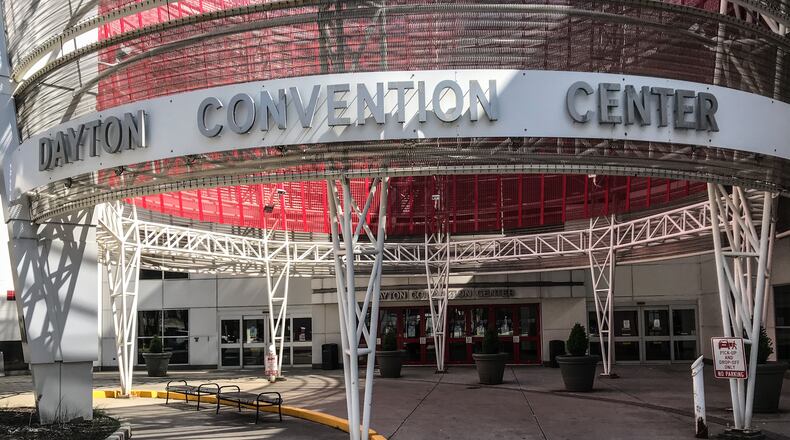Ohio Department of Health Director Dr. Amy Acton said the temporary hospitals would be used in the later stages of the pandemic and would be for patients needing less acute care.
The Dayton Convention Center, operated by a joint city-county authority, has 150,000 square feet of floor space and 77,000 square feet of exhibit space. It was built in 1973.
RELATED: Dayton Convention Center to be run by a new joint city, county board
DeWine also announced that the Ohio National Guard will provide medical care and patient transportation at Elkton Correctional Institution, a federal prison in Columbiana County where seven inmates tested positive for COVID-19, dozens more have symptoms and three have died. National Guard officials estimate the federal prison has just half of the medical care capacity it needs, DeWine said.
The governor asked the federal Bureau of Prisons to stop sending more inmates to Elkton during the crisis. Guard assistance will last seven to 10 days, he said.
Within Ohio prisons, five inmates at Marion Correctional and five inmates at Pickaway Correctional as well as 27 staff at four facilities have tested positive for the virus. These infections happened despite canceling visits, implementing health screenings for workers and changing how meals are served.
“Once it gets into a prison, it’s like in any other group of people — it takes off. This is something we’re going to have to continue to battle,” DeWine said.
Last week, DeWine sent letters to judges on 38 cases, asking them to consider early release. He said he’ll consider asking for early release of other non-violent offenders and those who are nearing release.
The Ohio Constitution vests power of commutation with the governor, but DeWine said that process takes at least 60 days. “Obviously we don’t have 60 days to try to deal with this. Our concern is the safety of the guards, the safety of all prisoners and the safety of the public. We’re balancing all of these things as we make these decisions,” DeWine said.
On Monday, the Ohio Department of Health reported 4,450 confirmed cases of coronavirus infections statewide, including 1,214 hospitalizations and 142 deaths. Four weeks ago, Ohio had its first confirmed cases: three in the Cleveland area.
The number of cases is expected to peak in three weeks at approximately 10,000 new cases per day, according to modeling. Over the course of 12 months, experts project that between 40% and 70% of the population will be infected with the coronavirus.
The latest modeling report from the Infectious Diseases Institute at Ohio State University is expected to be released later this week and will show the impact that Ohio's social-distancing measures have had.
Lt. Gov. Jon Husted pointed to a national map published by the New York Times that shows how traffic and travel patterns have changed as people stay home or fail to do so. The data show travel within Ohio has dropped off, indicating Ohioans are largely abiding by the orders.
About the Author

